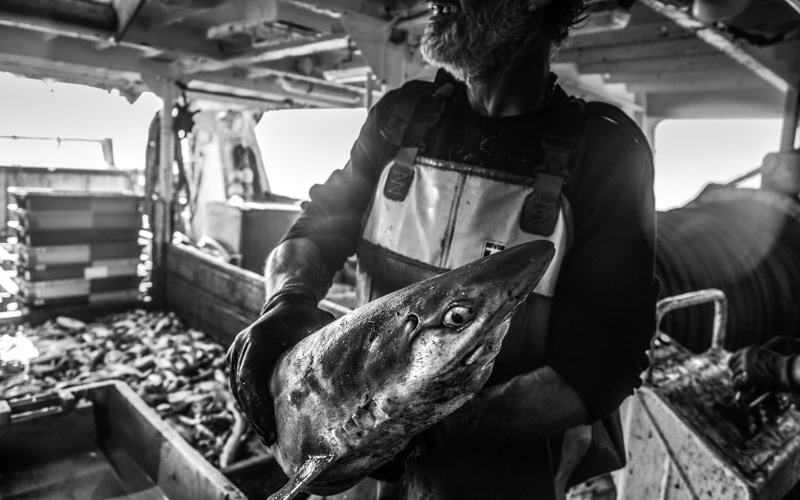Mediterranean Aquaculture & Fishing


Dragged from the sea by fishing nets, fish and bycatch asphyxiate on deck of a fishing trawler in the French Mediterranean Sea.
Images by Selene Magnolia, taken on assignment for Ecostorm and Compassion In World Farming.
To view more images and video related to this story, please visit our Aquatic Life gallery on the We Animals Archive.
The unseen story of wild-caught fish who become trapped in the fishing industry is one of extended torture.
These fish suffer slow deaths defined by nets, asphyxiation, ice, and blood. Whether they are the intended targets for a vessel’s trawling nets, or just ‘disposable’ bycatch species caught in the fray, once these animals are extracted from their ocean home and hit a vessel’s deck, they are en route to the same fate.


Workers aboard a trawler reel in nets loaded with target fish and bycatch after a few hours of fishing in the French Mediterranean Sea.
Farmed fish are not spared the pain of this prolonged system either. Although they experience different challenges within their overcrowded floating pens, farmed fish destined for consumption also face immediate icing as part of the packing process. Though believed to be a quick kill mechanism, the extreme cold can actually keep fish alive and suffering, even as they are packed.

Workers dismember fish at a processing plant in Greece. Species include sea bass and sea bream as well as eel and rainbow trout.


The fish tanks at a sturgeon farm in Greece which produces caviar.
The series of photographs shown here was taken by animal photojournalist Selene Magnolia to document the shocking reality for the fish who are trapped in present-day aquaculture conditions in and around the Mediterranean Sea near France and Greece. In addition to her contributions to HIDDEN: Animals in the Anthropocene, Selene is one of the photographers to host her images on our We Animals Archive.
Selene’s fishing story provokes questions about how we see the fish we eat – always together, be they packed into nets or packed on ice. We see fish in schools and not as individuals. These images show both industry and the individuals caught in our systems. Some of the most striking images are the close-up of an eye or a gaping mouth. We have been taught not to anthropomorphize, but this has prevented us from even acknowledging that their expressions and struggles, their dying and dead bodies, may actually be conveying something that we can understand: suffering.
— Jo-Anne McArthur
Images by Selene Magnolia, taken on assignment for Ecostorm / Compassion In World Farming.
To view more images and video related to this story, please visit our Aquatic Life gallery on the We Animals Archive.
More like this from We Animals Media:
Monbiot: Our Dying Coastlines
by Alex Lockwood | Aug 13, 2020
A Fish Story
by Jo-Anne McArthur | Feb 2, 2019
Prolonging Death: The Practice of Fish Tethering in Asia
by Jo-Anne McArthur | Aug 31, 2019



